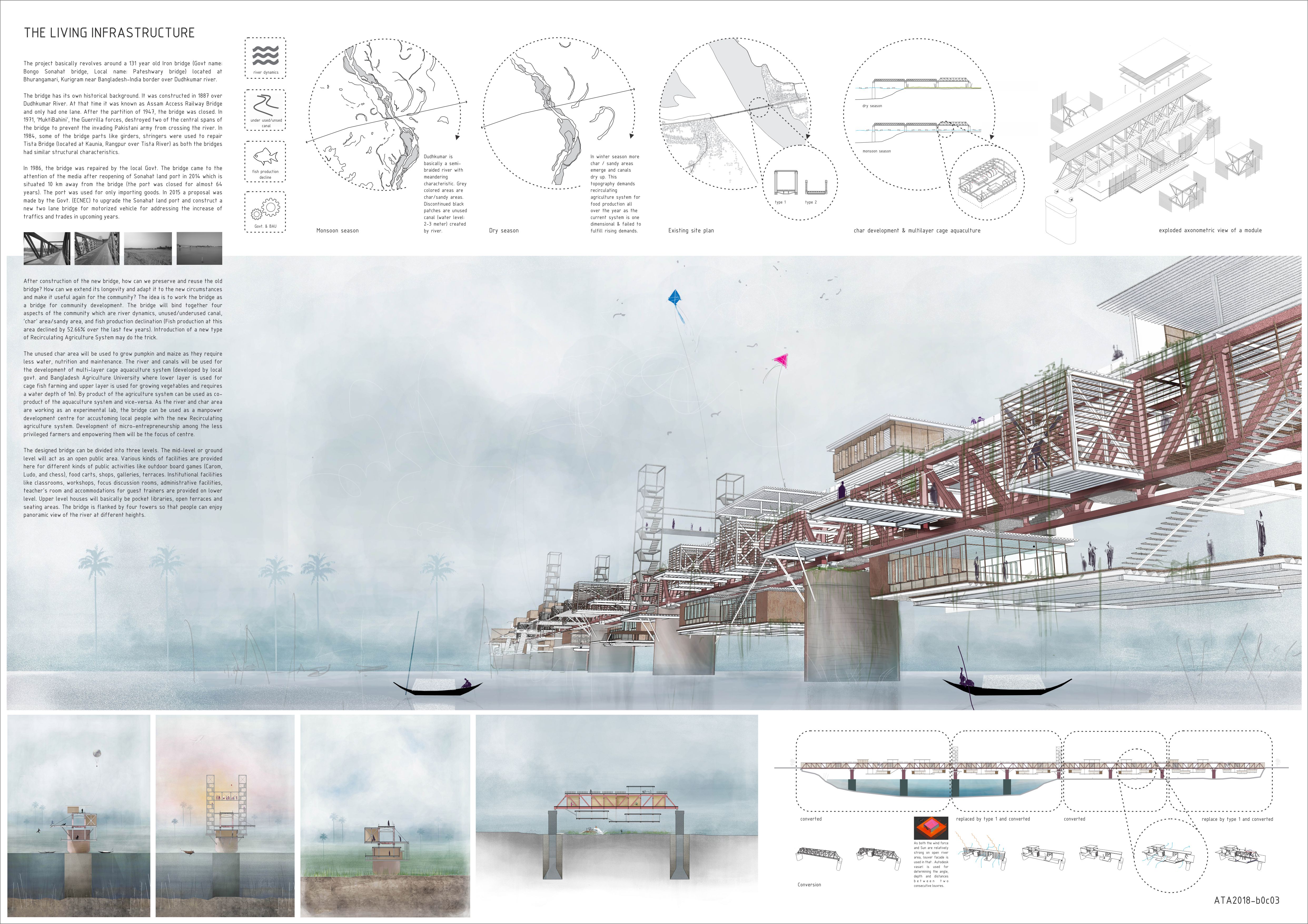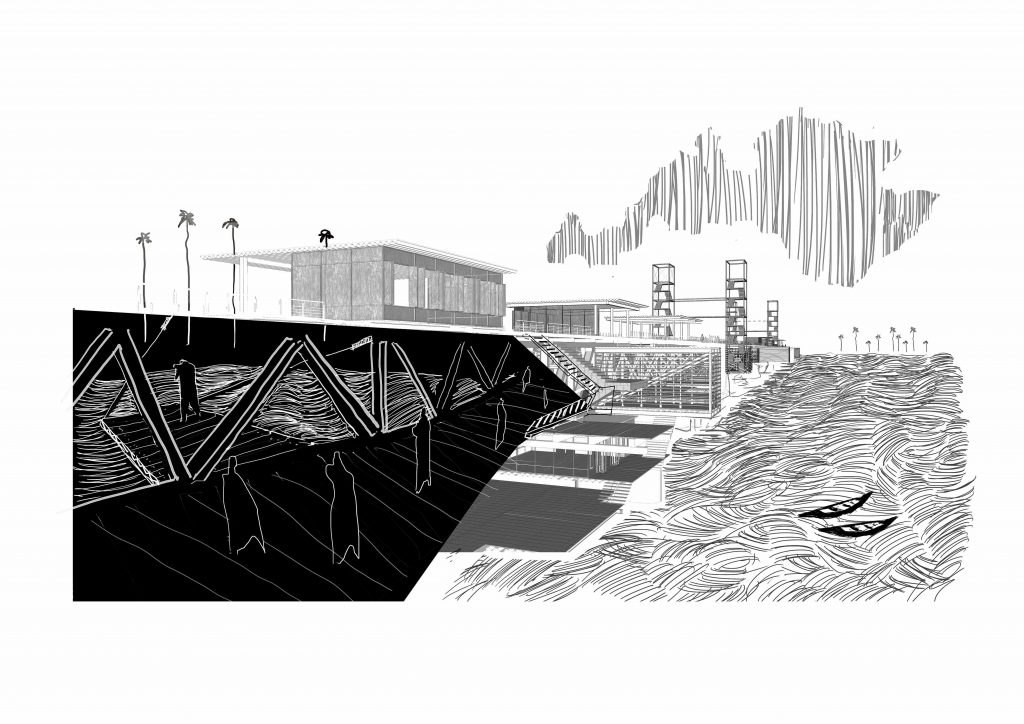The project basically revolves around a 131 years old Iron bridge (Official name: Bongo Sonahat bridge, Local name: Pateshwary bridge) located at Bhurangamari, Kurigram near Bangladesh-India border over Dudhkumar river.
The bridge has its own historical background. At the time of its construction in 1887, it was known as Assam Access Railway Bridge, and only had one lane. After the partition of 1947, the bridge was closed for use. During Bangladesh’s liberation war in 1971, ‘MuktiBahini’, the Guerrilla forces, destroyed two of the central spans of the bridge to prevent the invading Pakistani army from crossing the river. In 1984, some of the bridge parts like Girders and Stringers were used to repair the nearby Tista Bridge.
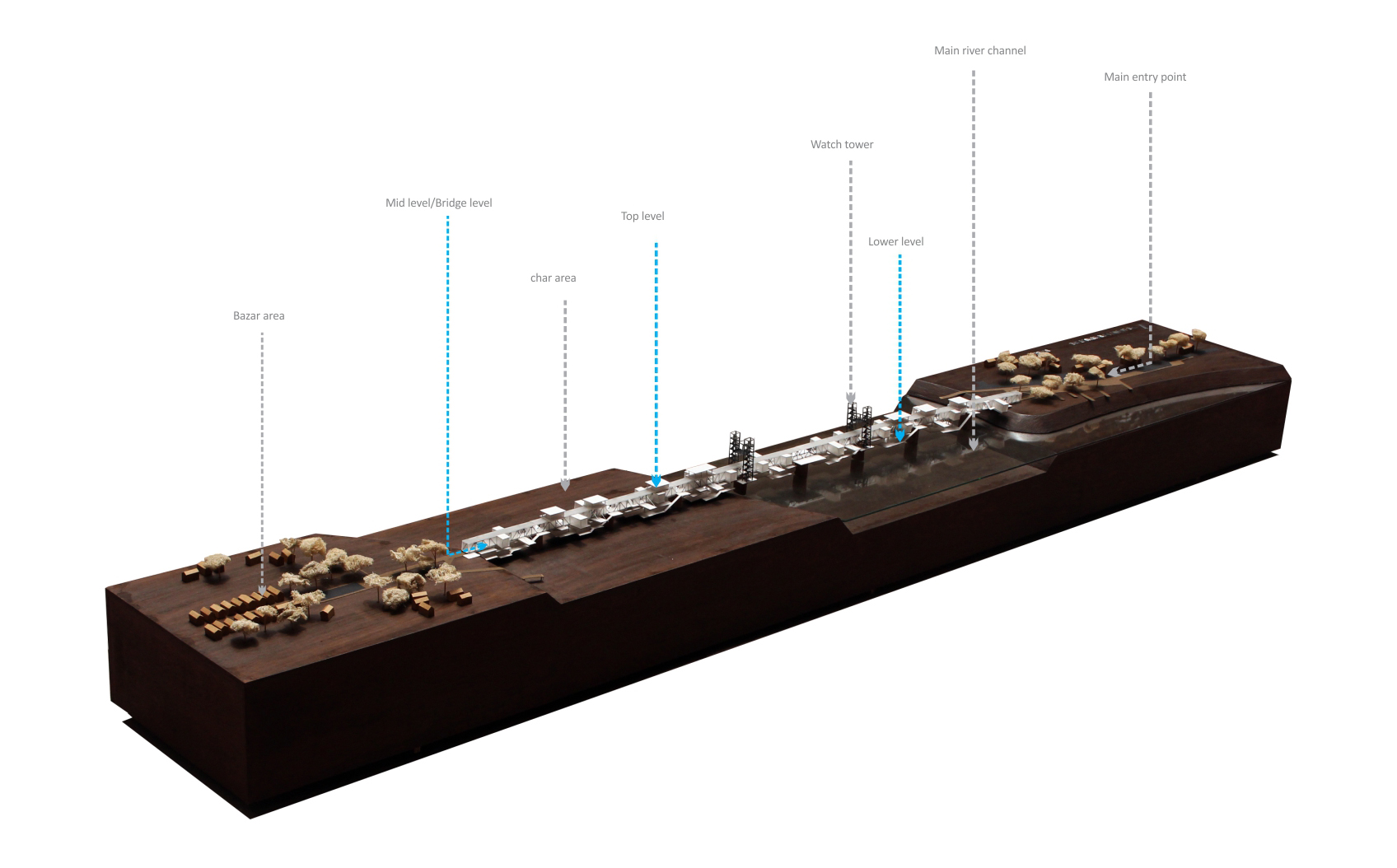
In 1986, the bridge was repaired by the local government. The bridge came to the attention of media after the re-opening of the Sonahat Land Port in 2014. The land port is situated 10 km away from the bridge and it had been closed for almost 64 years. The port is only used for importing goods from India. In 2015, a proposal was made by the Government (ECNEC) to upgrade the Sonahat land port, and to construct a new, two-lane bridge for motorized vehicles to address the increase of traffics and trades in upcoming years. After the new bridge is constructed, how can we preserve and reuse the old bridge? How can we extend its longevity, make it adapt to the new circumstances and be useful again for the community? The idea is to make it work as a bridge for the development of the community. The bridge will bind together the four aspects of the community: River Dynamics, the unused & underused Canals, the ‘Char’ or sandy area, and the Fish Production (fish production at this area declined by 52.66% over the last few years because of various reasons). Introduction of a new type of ‘Recirculating Agriculture System’ may do the trick.The unused Char Area will be used to grow pumpkin and maize as they require less water, nutrition and maintenance.
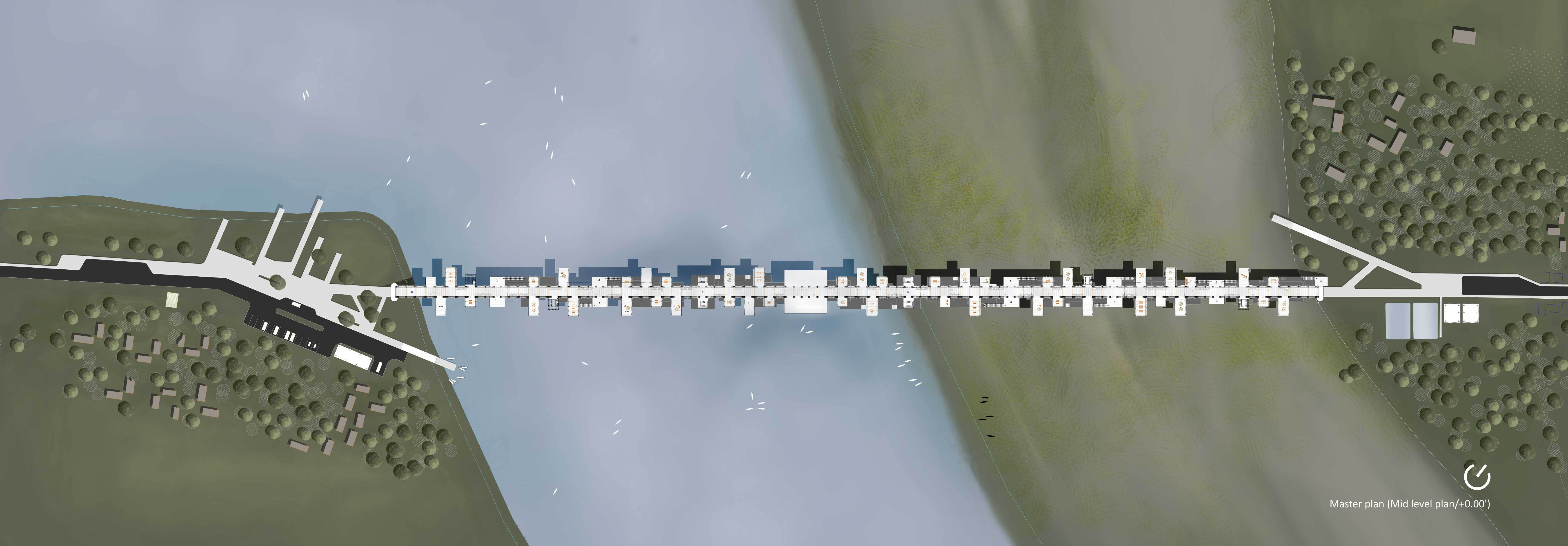
The river and canals will be used for the development of multi-layer cage aquaculture system (developed by local govt. and Bangladesh Agriculture University, where the lower layers are used for cage fish farming, and the upper layers are used for growing vegetables. It requires a water depth of 1 meter. Byproduct of the agriculture system can be used as a co-product of the aquaculture system and vice versa. As the river and char area are working as an experimental lab, the bridge can be used as a Human Resources Development Center, to accustom local people with the new Recirculating agriculture system. Development of micro-entrepreneurship among the less privileged farmers and thus empowering them will be the focus of centre. The designed bridge can be divided into three levels. The mid-level or ground level will act as an open public area; where various facilities will be provided for different public activities, like outdoor board games (Carom, Ludo, and chess), food carts, shops, galleries, terraces etc. Institutional facilities like classrooms, workshops, focus discussion rooms, administrative facilities, teacher's room and the accommodations for guest trainers are provided on the lower level. The upper level houses will basically be pocket libraries, open terraces and seating areas. The bridge is also flanked by four towers, so that people can enjoy the breathtaking panoramic view of the river from different heights.
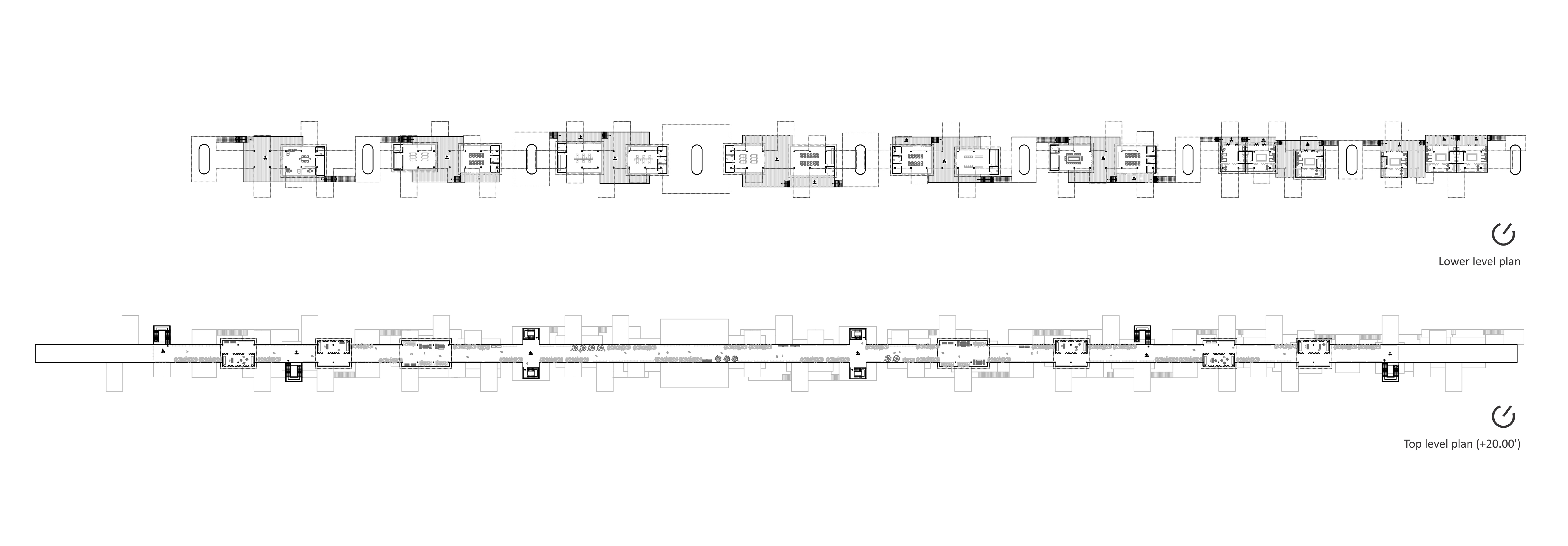
The Board:
